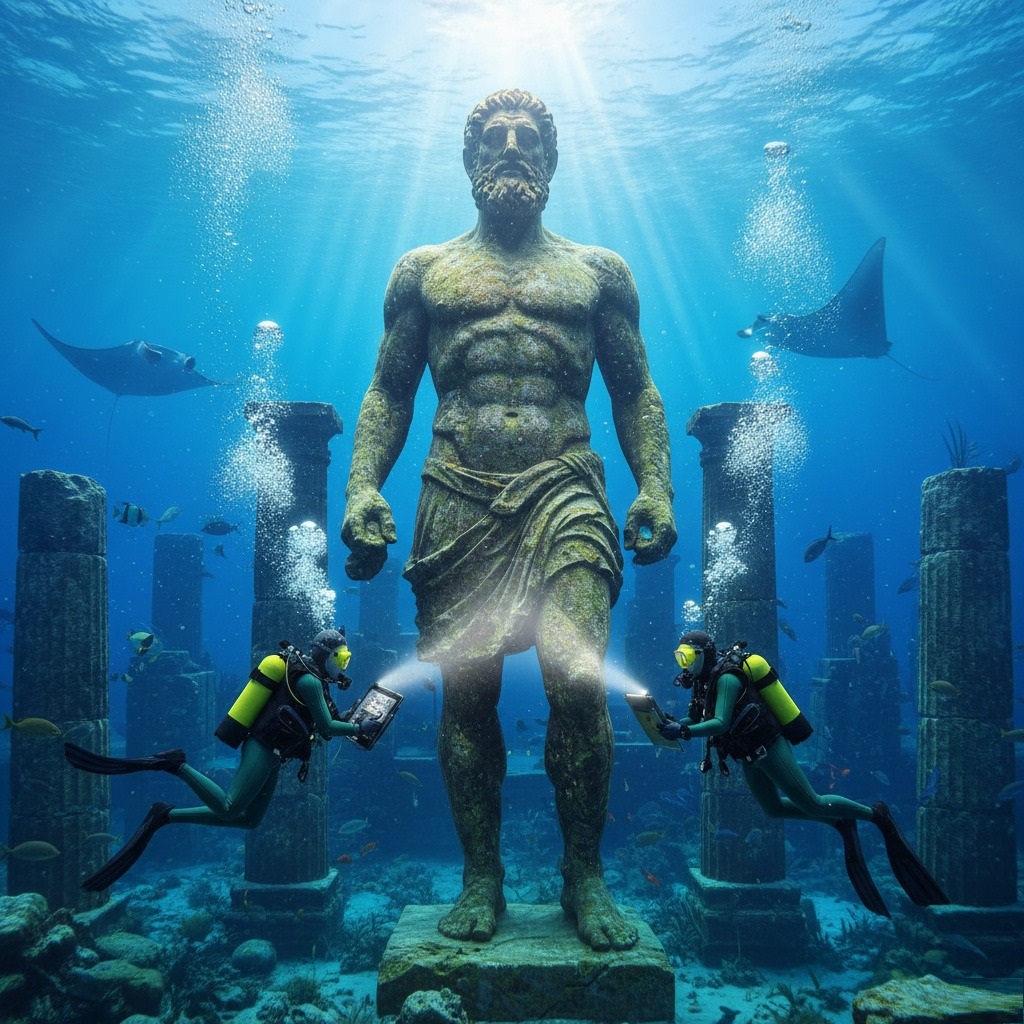The Sunken Titan of Thera: Unveiling the Aegean’s Deepest Secret

The year is 2042. For decades, whispers of a lost civilization in the Aegean, far grander than even Minoan Crete, had tantalized marine archaeologists. Dr. Aris Thorne, a man whose life had been dedicated to the silent depths, felt a restless hum in his bones when seismic data from a recent volcanic tremor near Santorini suggested unusual anomalies at depths previously thought barren. This wasn’t just another shipwreck; the patterns hinted at colossal, organized structures.
His team, aboard the research vessel Aegis, had descended into the impossibly clear waters off the coast of what ancient texts referred to as ‘Thera.’ The initial sonar readings were promising, then astounding. What they found was not a city, but a monument.
On their fifth dive, Lieutenant Commander Lena Petrova, Aris’s lead diver and a woman of steely nerve and keen eye, was the first to see it. Emerging from a swirling cloud of stirred sediment, a massive, ancient-looking stone statue materialized before her. Its form was unmistakably human, male, and of a scale that dwarfed the colossal statues of Rameses II. Covered in centuries of emerald-green marine growth, it stood resolute, a sentinel of a forgotten age.
“Aris, do you see this?” Lena’s voice crackled over the comms, a rare tremor of awe in her usually composed tone. “It’s… it’s beyond anything we’ve ever imagined.”
Aris, his heart hammering against his ribs, guided his sub closer. The statue’s face, though worn by the inexorable caress of the currents, still held an expression of serene power. It wasn’t just a statue; it was a god, a titan, frozen in an eternal vigil. Surrounding it, partially obscured by towering, ancient columns draped in sponges and coral, were the faint outlines of colossal structures—the true scale of this forgotten metropolis slowly revealing itself.
The water was a vibrant, almost celestial blue, the sun’s rays filtering down from the surface in shimmering columns, illuminating schools of fish that darted around the ancient stone. A pair of majestic manta rays glided silently in the distance, their shadows passing over the colossal head of the sunken titan.
Lena and her fellow diver, Dr. Ben Carter, swam closer, their powerful lights cutting through the blue-green twilight, casting eerie shadows on the statue’s weathered form. They held their underwater tablets, their fingers rapidly documenting every barnacled detail, every ancient inscription that peeked through the algal veil. This wasn’t merely a discovery; it was a reawakening.
Initial radiocarbon dating of organic matter found clinging to the statue’s base suggested an astonishing age – possibly predating the Minoans by millennia. Could this be the legendary Atlantis, not merely a myth, but a tangible, monumental reality? The sheer architectural ambition hinted at a civilization with advanced knowledge, perhaps even beyond what was thought possible for the era.
As the team continued their painstaking work, mapping the sprawling ruins, cataloging artifacts, and piecing together the narrative of this lost people, the “Sunken Titan of Thera” became more than an archaeological find. It became a symbol of humanity’s enduring capacity to create, to dream, and to be forgotten, only to be rediscovered by those willing to plumb the deepest secrets of our blue planet. The Aegean, once thought fully explored, had just revealed its most profound and humbling mystery.
